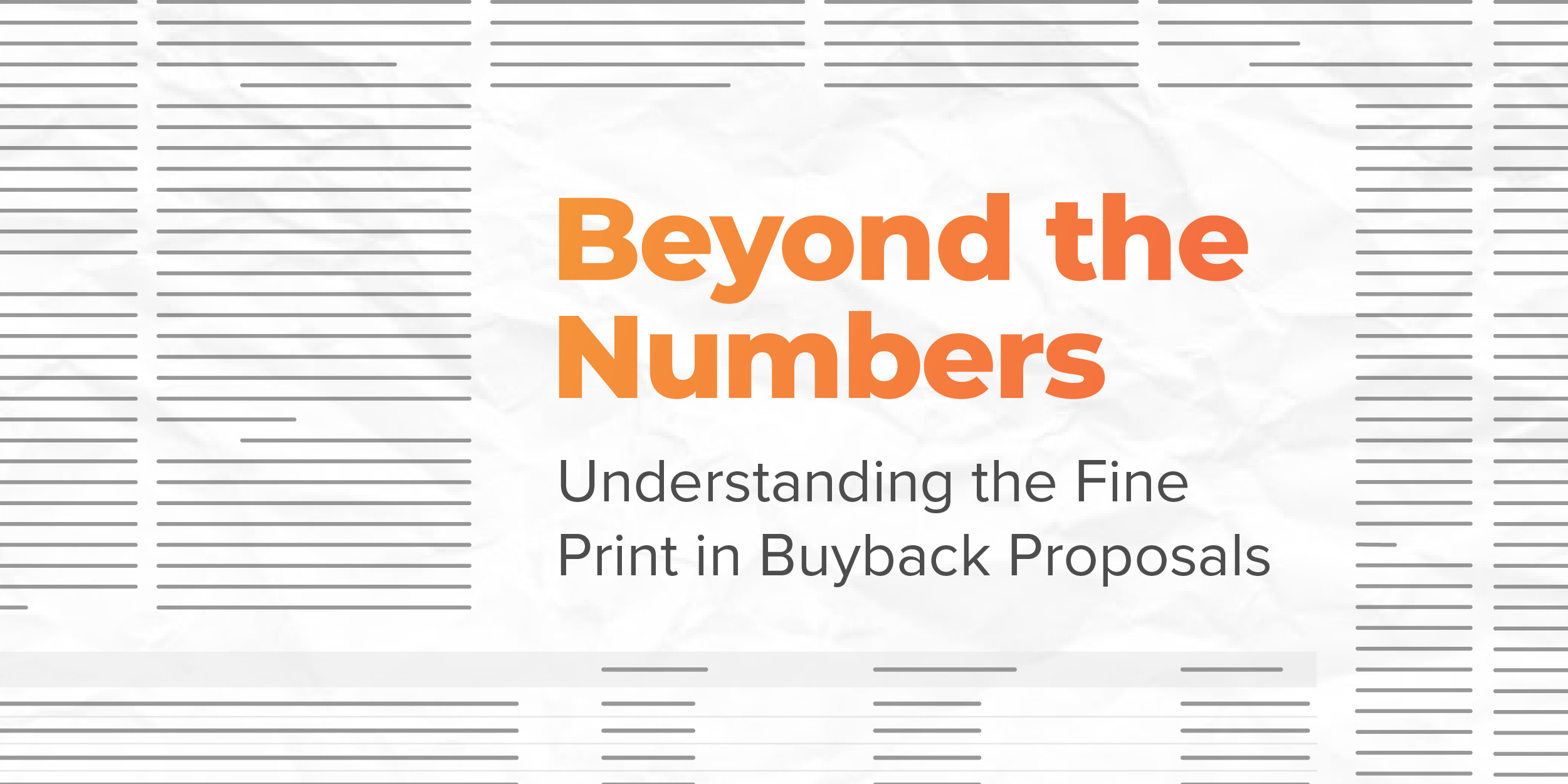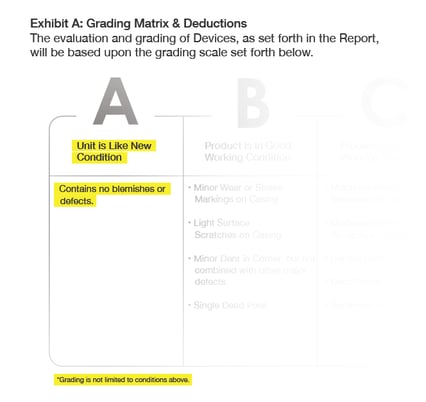
Beyond the Numbers — Understanding the Fine Print in Buyback Proposals
Are you tired of being blindsided by mobile device buyback proposals that promise the world but leave you with disappointment and a lower-than-expected payout? It's time to unveil the secrets hidden in the fine print and expose the dishonest tactics used by some buyback providers.
At Tech Defenders, we believe in transparency and empowering our clients to make informed decisions. In this blog post, we expose the dishonest tactics employed by certain buyback providers, shedding light on the importance of understanding the fine print to avoid falling victim to misleading offers.
The Fine Print
When it comes to buyback proposals, the fine print often hides crucial details that can significantly impact the final payout. Many buyback providers engage in deceptive practices, exploiting the lack of attention given to the fine print by their clients. One common tactic is to focus solely on the highest possible payout while burying unfavorable terms in small font sizes. It's essential to keep a vigilant eye on these hidden clauses and understand their implications.
At Tech Defenders, we take a different approach. Our proposals are designed to be transparent from the start, ensuring that our clients have all the necessary information to make informed decisions. We present not only the highest possible payout but also the average payout and a guaranteed minimum payout. We don't hide behind fine print but provide clear and concise information to empower our clients.
Grade Out
Many buyback providers make misleading claims regarding the grade of devices they accept. They might state that the proposal is based on an entire fleet of A Grade devices, despite less than 1% of school devices meeting this criterion. The reality is that the majority of used school devices fall into lower grades due to normal wear and tear. At Tech Defenders, we maintain a threshold of 20% for F Grade devices, meaning at least 20% of your fleet can be F Grade before the original buyback proposal can be altered, ensuring fair payouts even if some devices fall below pristine conditions. We believe in honesty and transparency throughout the grading process.
Grade Out Example:



Deductions: The Hidden Costs
Another tactic employed by some buyback providers is to inflate the quoted payout by waiving deductions initially, only to apply them later through fine print clauses. These deductions can be substantial and significantly reduce the final payout. At Tech Defenders, we don't engage in misleading practices. We provide upfront information about deductions based on the details provided by our clients. This way, you know exactly what to expect and can make informed decisions regarding your buyback.
Example 1:

Guarantees: Separating Fact from Fiction
Some buyback providers offer a so-called "guarantee" in their quotes, leading clients to believe they are protected. However, upon closer inspection, these guarantees are at the discretion of the provider and often come with numerous variables and conditions that make them nearly impossible to utilize. For instance, some providers' guarantee will only be applied if your fleet has less than 5% F Grade devices, which is almost never the case when dealing with student devices. At Tech Defenders, we believe in genuine guarantees. Our guaranteed minimums are transparent, with no hidden clauses or excessive conditions. We stand by our word and ensure a straightforward process for our clients. When we offer a guarantee, you can trust that it's meaningful and reliable.
Example 1:
Example 2:

Tips to Successfully Navigate a Proposal
To navigate proposals effectively and ensure you're getting the best deal for your used devices, there are a few key tips to keep in mind. First and foremost, read the fine print carefully. Take the time to go through every detail and make sure you understand the terms and conditions, including any hidden fees or deductions.
It's also important to pay attention to the grading system used by the buyback provider. Understand what each grade means and what the criteria are for devices to fall into each category. If an A Grade is considered “like new with no blemishes” then it’s very likely the majority of your devices won’t be considered A Grade.
Additionally, ask as many questions as possible during the proposal process. Seek clarification on any unclear points and inquire about the buyback provider's policy on MDM-locked devices, as this can have an impact on your potential payout. By following these tips and being thorough in your evaluation, you can navigate proposals with confidence and choose a buyback provider that offers transparency and fair terms.
In conclusion, navigating the world of used device buyback providers can be tricky, but with some careful research and due diligence, you can find a company that will give you a fair deal. Take the time to read the fine print, understand the grading system, and ask as many questions as possible. And if you're looking for a proposal that truly is reliable and transparent, consider giving Tech Defenders a try and get a quote today!



